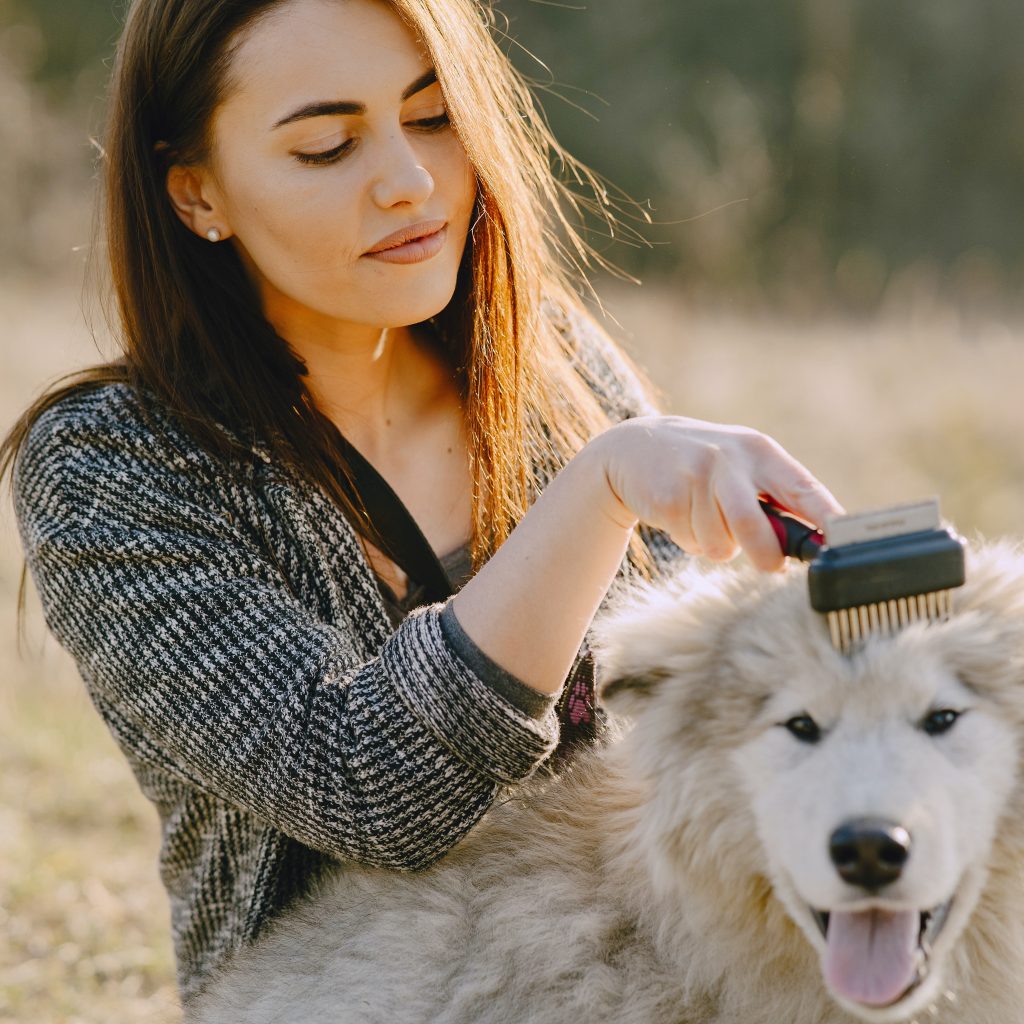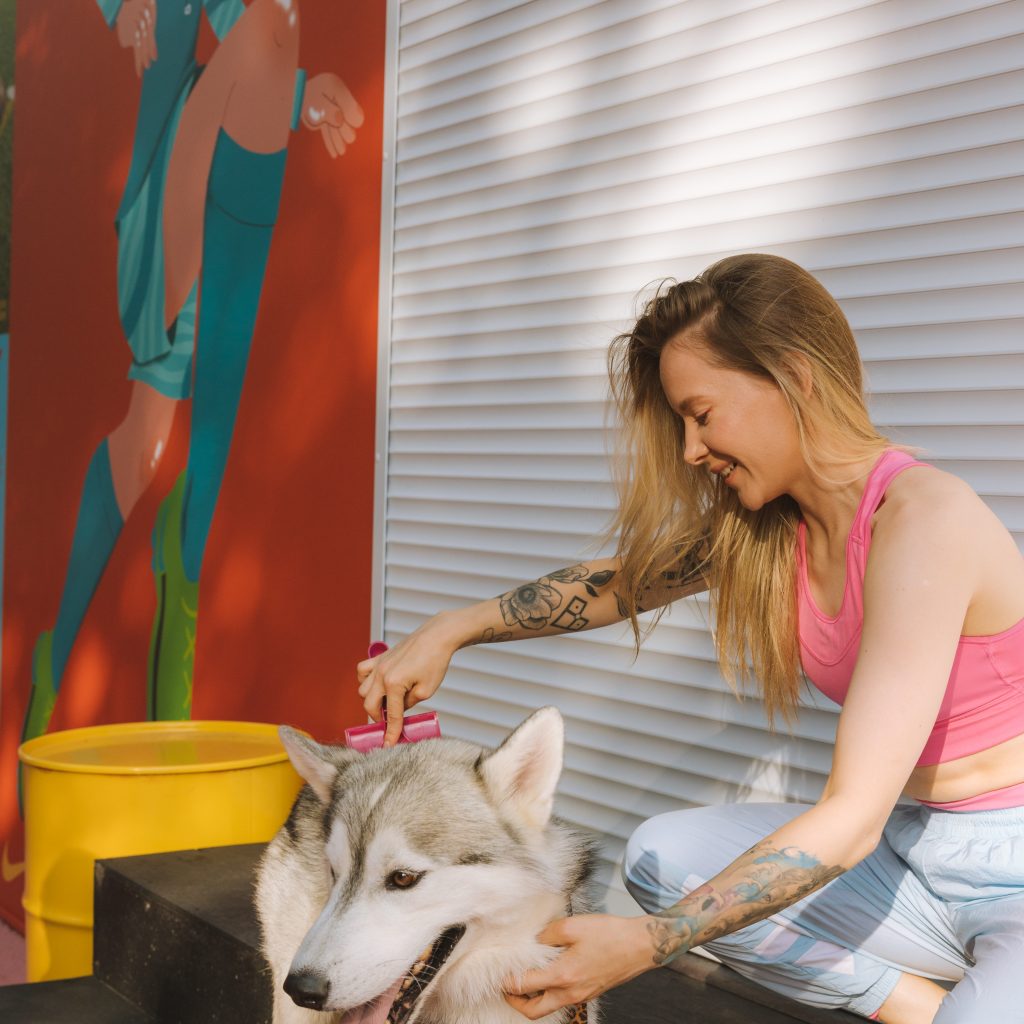Pet grooming is crucial for your furry friend’s health and happiness. Regular grooming helps maintain your pet’s physical health by preventing matting, skin irritation, and infections. Additionally, grooming can improve your pet’s mental well-being by providing a bonding experience and reducing stress. In this article, we’ll cover the essential tools and steps for pet grooming, as well as tips for choosing the right products for your pet’s specific needs.
Basic Pet Grooming Tools
Pet grooming is an important aspect of pet care, and it requires a set of essential tools for effective results. These tools include brushes, combs, and clippers, each with specific uses and functions.
Brushes are a must-have tool for any pet grooming kit. They come in different types, including slicker, pin, and bristle brushes, designed for different coat types. Slicker brushes are ideal for removing tangles and mats from long-haired pets, while pin brushes are best suited for medium and long-haired breeds. Bristle brushes work well for short-haired breeds to remove loose hair and dirt.
Combs are also important tools for pet grooming, used to detangle hair and remove mats. They come in different types, such as flea combs and de-matting combs. Flea combs are designed to remove fleas and their eggs from your pet’s coat while de-matting combs are used to remove mats and tangles from thick, curly, or long-haired breeds.
Clippers are another essential tool for pet grooming. They are used to trim and shape your pet’s hair, making it look neat and well-groomed. Clippers come in different types, such as cordless and corded clippers, and you can choose one that best suits your pet’s grooming needs.
When choosing pet grooming tools, it’s essential to consider your pet’s breed and coat type. For example, long-haired breeds require slicker brushes to remove tangles and mats effectively. Meanwhile, short-haired breeds only need bristle brushes to remove loose hair and dirt.
It’s also crucial to consider your pet’s specific needs. If your pet has sensitive skin, it’s best to use soft brushes to avoid skin irritation. For thick fur, you may need a clipper with adjustable blades to ensure you don’t cut too much hair at once.

The Grooming Process: Step-by-Step
The grooming process involves several steps to ensure your pet’s coat and overall health are in good condition.
First, brush your pet’s coat to remove any tangles or mats. Use the appropriate brush for your pet’s coat type, and brush gently to avoid hurting your pet.
Next, give your pet a bath using pet-friendly shampoo. Avoid getting water in your pet’s ears, and rinse thoroughly.
After bathing, dry your pet with a towel or hairdryer, and brush their coat again to remove any tangles.
If necessary, trim or clip your pet’s hair to the desired length. Use caution and follow instructions carefully to avoid accidentally hurting your pet.
Trim your pet’s nails regularly, being careful not to cut too close to the quick. Ear cleaning and teeth brushing should also be done regularly to maintain your pet’s hygiene and prevent infections.
It’s essential to groom your pet regularly, and the frequency depends on their breed and coat type. Some pets may require weekly grooming, while others may need it less frequently.
If you encounter any issues during the grooming process, such as skin irritation or excessive shedding, consult with your veterinarian for guidance.
The grooming process involves several essential steps to maintain your pet’s coat and overall health. With proper technique and regular grooming, you can keep your furry friend looking and feeling their best.
Dealing with Fur and Hair
Pets can have different types of fur and hair, such as long, short, curly, or wiry. Proper grooming is necessary to maintain their coats and prevent issues like matting and shedding.
Regular brushing with a suitable brush or comb is essential for pets with long hair to avoid tangles and mats. For pets with short hair, a rubber brush or grooming mitt can be used to remove loose hair.
To deal with shedding, use a de-shedding tool or pet hair roller to remove loose fur from your pet’s coat and furniture. Regular grooming can also help reduce shedding.
If your pet’s fur or hair becomes matted, use a de-matting tool or scissors to carefully remove the mats. Be careful not to hurt your pet’s skin.
To maintain your pet’s coat, use pet-friendly shampoo and conditioner and follow the instructions carefully. Consider using grooming products such as detangling sprays or coat conditioning sprays to keep your pet’s coat healthy and shiny.

Choosing the Right Shampoo and Other Grooming Products
Choosing the right grooming products for your pet is essential for maintaining their coat and overall health. There are different types of pet shampoos available, including medicated shampoos, hypoallergenic shampoos, and flea and tick shampoos.
Medicated shampoos are used to treat specific skin conditions such as allergies, dry skin, or infections. Hypoallergenic shampoos are gentle and suitable for pets with sensitive skin, while flea and tick shampoos help repel and kill these pests.
Other grooming products such as conditioners, detanglers, and deodorizers can also be used to maintain your pet’s coat. Conditioners help moisturize and soften the fur, while detanglers prevent matting and make brushing easier. Deodorizers are used to eliminate odors and keep your pet smelling fresh.
When choosing grooming products, consider your pet’s specific needs and coat type. For example, a pet with dry skin may benefit from a moisturizing shampoo and conditioner. A pet with long hair may need a detangling spray to prevent matting.
Always read the label and follow the instructions carefully when using grooming products. If you’re unsure which products to use, consult with a veterinarian or professional groomer.
Choosing the right grooming products is crucial for maintaining your pet’s coat and overall health. Consider your pet’s needs and coat type when selecting shampoos and other grooming products, and always follow the instructions carefully.
Tips for Grooming Specific Breeds
Grooming needs vary greatly depending on the breed of your pet. Long-haired breeds like Afghan Hounds and Old English Sheepdogs require frequent brushing to prevent matting and tangling of the fur. They may also require regular trimming to keep their fur at a manageable length.
Curly-haired breeds like Poodles and Bichon Frises require more attention to prevent matting and tangling. Regular brushing and clipping are necessary to maintain their curly coats. It’s important to use the right grooming tools for these breeds, such as slicker brushes and de-matting combs.
Breeds with sensitive skin, such as Bulldogs and Boxers, require a different approach to grooming. These breeds can be prone to skin irritation and allergies, so it’s important to use gentle grooming products and avoid over-bathing. Regular cleaning of wrinkles and folds is also important to prevent infections.
When grooming any breed, it’s important to be patient and take your time. Rushing through the grooming process can cause stress for your pet and increase the risk of injury. It’s also important to reward your pet with treats and positive reinforcement to make grooming a positive experience for both of you.
Final Thoughts
Pet grooming is crucial for the overall health and well-being of your furry friend. Regular grooming helps prevent skin issues, hair and fur matting, and other health problems. Throughout this article, we’ve covered the basic tools needed for grooming, the step-by-step process, dealing with specific coat types, and choosing the right products. Remember to tailor your grooming routine to your pet’s individual needs and breed. By following these tips and regularly grooming your pet, you can help ensure their happiness and health.
